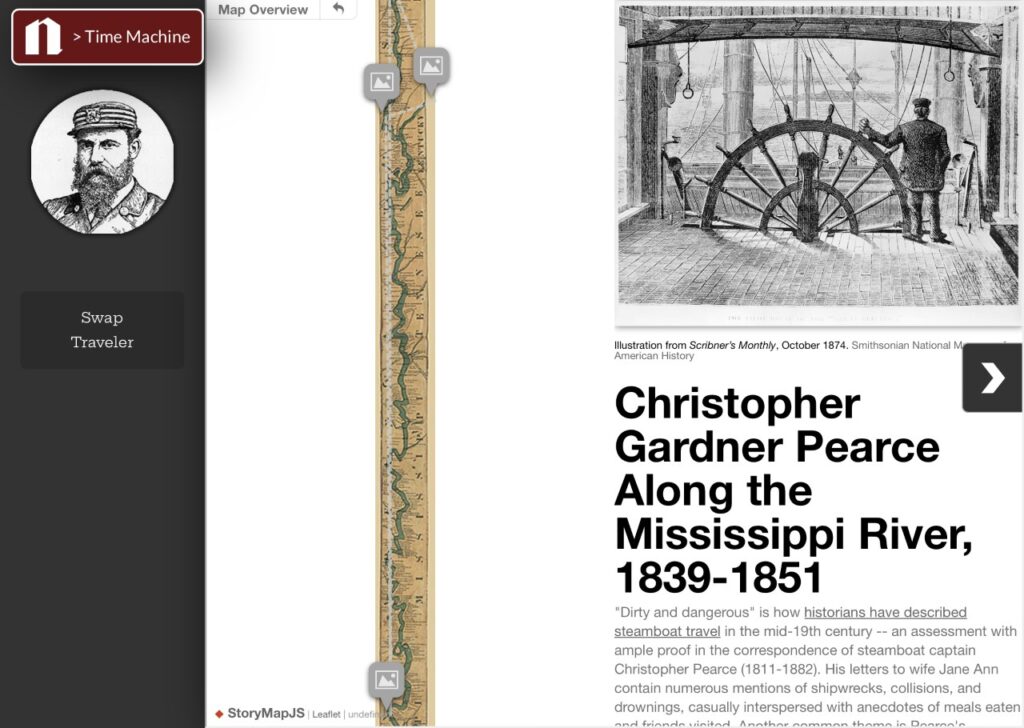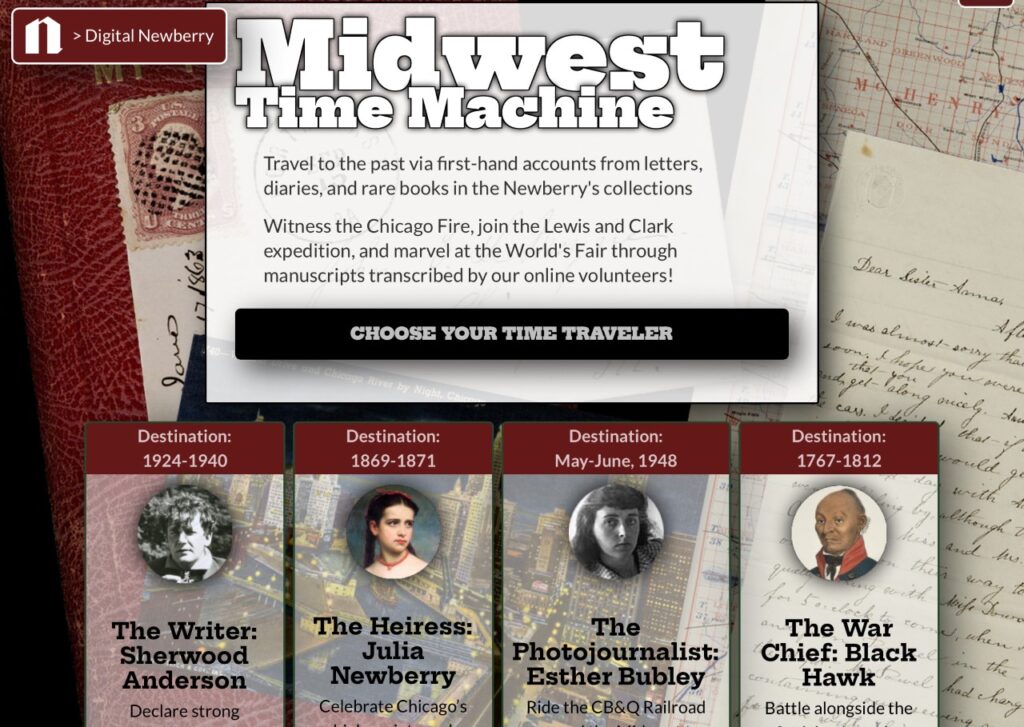While searching for a source to write a review about, I stumbled upon The Midwest Time Machine and was instantly interested. I’m currently in historical methods and I wish there was something like this for my topic. I was instantly interested in the idea of clicking on a ‘time traveler,’ who was an actual person to learn more about their journey and who they were. I think by learning about a specific person in history, who may not have been as popular as others, is a useful way to put history in a more personal perspective. I’m also a massive history nerd, so websites like these are things I look at on my own time so this was interesting to find!
The Midwest Time Machine is a project that was developed by a digital historian at The Newberry in Chicago. The Newberry is an archive where many people go to track their ancestry and other forms of history. The project itself was developed by Nick White, a digital historian and librarian who works for The Newberry. He used StorymapJS to develop this project, which we used in class. The Newberry has an entire group of digital historians and digital librarians working on similar projects. There is one digital history project, which I will briefly mention, titled If You Toured Chicago in 1910, What Would You Do? that gave inspiration to Nick White to develop his time machine project. The project has a similar idea regarding the time machine aspect. Both projects seem to have been developed in the late 2010s, though neither of them have an exact year of development.
The Midwest Time Machine history project is an interactive source where people can go to choose a person that actually existed, and as you click on each person, it takes you to a different set of sources, and sometimes a map. With each source provided you can choose to click on the sources provided to see the actual primary sources The Newberry has in their archives. There are many photos, maps, diary entries, and other sources that are prevalent to each time traveler you choose. There are eleven people to choose from, and each person has a different set of sources when you click ‘begin your journey.’
This project is a helpful tool in understanding what was happening at different points of the nineteenth century. By seeing what certain people in history were going through, it lets us travel back in time to the old west. The project itself allows historians to look through a lens that may not be one they look through often. That is to say that, though historians take a step into the past, projects like this make the history become more personal. Since the project allows you to read sources that actual people wrote you can get an idea of what life was like for them. More importantly, the maps and diary entries attached to the historical figure would be extremely useful for a research project.
For example, one of the time travelers you can explore is Captain Christopher Gardner Pearce, who was the captain of a steamboat. His journey down the Mississippi river is depicted on a map of the river. Each pin you click on shows you a different location that Pearce stopped at along the way. The goal of the project, as a whole is to educate as many people as people on the lives of the people who moved west. The project would be a great source for young people interested in history as well, as they may want to know more about life in the west and expand their knowledge on what happened during the 1800s.

When looking at this project from a broad lens, I wonder what the access to the project itself is like. I would not have known about the project if I did not go looking for something like it. The project includes only eleven figures which is a great number of people to examine, but I wish there were more to click on. The description of the project talks about the Lewis & Clark expedition, so it would have been helpful to see documents from their expedition. A source from Sacajawea would be useful as well. While the project does an interesting job of laying out what the people at the time were going through and experiencing, it would be beneficial to see more of the Lewis & Clark expedition from the leaders of the expedition itself. I wonder what it would look like for the project to have documents from that period. While the project has a few examples of people of color, I wonder if there is any way they could include more people of color in their research. The perspectives from an enslaved person or Native American at the time might be useful in better understanding what life was like in the West at this time. I also think it would be useful to have a social media page for this specific project. Whether that be Facebook, Twitter, or even Instagram, I think it would be engaging for a larger audience to see.
Projects like this one aim to educate others on certain parts of history. Without these projects, certain parts of history would not be digitized. The digitization of certain sources, especially maps, is helpful in understanding the larger historical impact projects like these may have.
